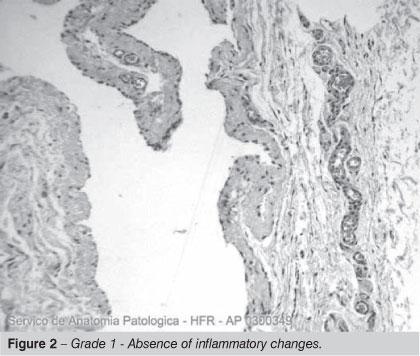OBJECTIVE: To determine whether a biopsy of the synovia of the carpal tunnel is able to identify systemic diseases that were not diagnosed by clinical examination and laboratory tests. METHODS: Anatomical pathology P examinations of synovial tissue were performed in 46 patients that underwent open carpal tunnel release. Anatomical pathology examination with hematoxylin-eosin staining determined the intensity of the inflammatory process and the authors proposed a new classification of the injury according to the intensity of the inflammatory process. RESULTS: The anatomical pathology examination showed that 56.6% were classified as grade I (unchanged inflammation), 32.6%, grade II (leukocyte infiltration and discreetmoderate fibrosis), 4.3%, grade III (leukocyte infiltrate and intense fibrosis, the presence of fibrin and vascular neoformation) and 6.5%, grade IV (changes described above associated with the presence of local calcification and giant cells). Two patients with amyloidosis were classified as grade I and II and no stockpiles of amyloid material were found on their slides. Two patients with hyperparathyroidism and another with chronic kidney failure were classified as grade IV. CONCLUSION: Synovial biopsy of the carpal tunnel did not make early diagnosis of potential systemic diseases possiblein patients with carpal tunnel syndrome, and adds extra costs to the procedure.
Carpal tunnel syndrome; Biopsy; Nerve crush






